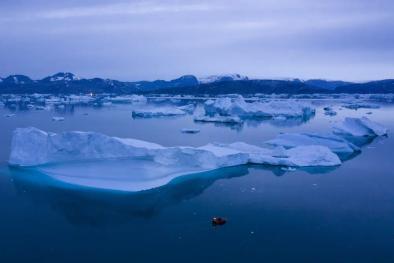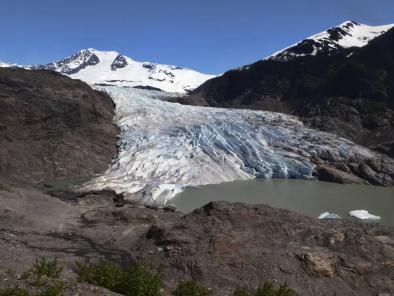Review article: Earth's ice imbalance
Key findings & significance
- Earth’s ice is melting faster today than in the mid-1990s as climate change nudges global temperatures ever higher.
- Altogether, an estimated 28 trillion metric tons of ice have melted away from the world’s sea ice, ice sheets and glaciers since the mid-1990s, enough to raise the average global sea level by 1.4 inches (3.5 cm).
- Annually, the melt rate is now about 57 percent faster than it was three decades ago.
- The study did not include snow cover over land, river or lake ice, or permafrost.
Author quotes
It was a surprise to see such a large increase in just 30 years.
Thomas Slater, study lead author and glaciologist at Leeds University in Britain.
Abstract
We combine satellite observations and numerical models to show that Earth lost 28 trillion tonnes of ice between 1994 and 2017. Arctic sea ice (7.6 trillion tonnes), Antarctic ice shelves (6.5 trillion tonnes), mountain glaciers (6.1 trillion tonnes), the Greenland ice sheet (3.8 trillion tonnes), the Antarctic ice sheet (2.5 trillion tonnes), and Southern Ocean sea ice (0.9 trillion tonnes) have all decreased in mass. Just over half (58 %) of the ice loss was from the Northern Hemisphere, and the remainder (42 %) was from the Southern Hemisphere. The rate of ice loss has risen by 57 % since the 1990s – from 0.8 to 1.2 trillion tonnes per year – owing to increased losses from mountain glaciers, Antarctica, Greenland and from Antarctic ice shelves. During the same period, the loss of grounded ice from the Antarctic and Greenland ice sheets and mountain glaciers raised the global sea level by 34.6 ± 3.1 mm. The majority of all ice losses were driven by atmospheric melting (68 % from Arctic sea ice, mountain glaciers ice shelf calving and ice sheet surface mass balance), with the remaining losses (32 % from ice sheet discharge and ice shelf thinning) being driven by oceanic melting. Altogether, these elements of the cryosphere have taken up 3.2 % of the global energy imbalance.
Related Content






